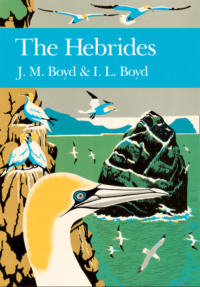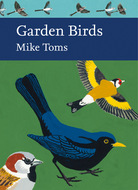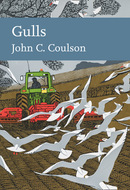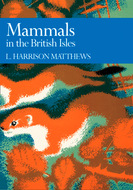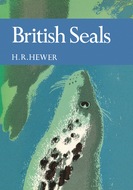Kitap dosya olarak indirilemez ancak uygulamamız üzerinden veya online olarak web sitemizden okunabilir.
Kitabı oku: «The Hebrides», sayfa 3

Fig. 7 Map showing the Tertiary volcanic centres and swarms of dykes in the Hebrides (Donaldson 1983)
One of the salient features of the main Tertiary centres, particularly well-displayed in central Mull, is the formation of calderas caused by crustal ring fractures. Within these fractures—which were superimposed upon each other over millions of years—the solid rock sank, and the space was filled by upwelling magma. This has caused the fairly sharp juxtaposition of great masses of granite many cubic kilometres in extent with even greater masses of gabbro. The plane of fracture is a shatter zone in which fragments of the dark gabbro became embedded in the upwelling granite, or vice-versa, to create a breccia. This is well seen in the sheer cliff of Mullach Mor at St Kilda, where the eucrite (gabbro) to the west marches with the granophyre to the east, and is deeply veined by it. (A more detailed description of the magma-chambers of Rum and St Kilda is given in Chapters 15 and 16, respectively.)
The enormous explosive forces of these volcanoes resulted in the cracking and fissuring of the crust. The geological map shows Skye, Mull and Arran like the points of strike of bullets on a pane of glass, with the systems of cracks running roughly north-west to south-east. The cracks range from a hair’s breath to over 30m thick and they have been filled with dark dolerite and basalt dykes (vertical) and sills (inclined). The swarms of Tertiary dykes from Skye, Mull and Arran traverse the crust from Lewis to Loch Linnhe, from Coll to Yorkshire and from Colonsay to Ayrshire respectively. The Inner Hebrides are riven with basalt and dolerite dykes which are usually 1–5m thick. These often become hard ridges among softer rocks like those in the Jurassic limestones on the shores and cliffs of Eigg, and trenches in harder rocks such as the gneiss on the shores of Tiree and Coll. The Camus Mor dyke on Muck is a striking example, which slices through the limestones and lavas and has a broad vertical exposure on the sea-cliff. Sills often occur in the bedding planes between lava-flows and sedimentary rocks and, like the lava, have columnar jointing. There are good examples of sill complexes to be seen in northern Skye and the Shiant Islands and, being composed of a hard coarse-grained dolerite, they often form a break of slope or escarpment edge in the basalt country. They play an important part in the composition of the landscapes of Raasay, Skye, and Mull.
The earthquakes which accompanied these episodes of cracking and fissuring must have been enormous, certainly greater than any that happen in the world today. Another type of circular Assuring occurs as a result of great crustal explosions within the roots of the volcanoes, which split the existing igneous complex in a nest of conical cracks several kilometres in diameter at the present land surface. Sometimes they are several metres wide and are filled with basalts and dolerites—these are called cone-sheets. All the Tertiary centres possess them, and they are exceptionally well displayed on the Oiseval and Conachair cliffs at St Kilda and at Gribum in Mull.
Quaternary Features
In the last 18,000 years Scotland has endured a glaciation, and a period of emergence from the ice and the recovery of life. In the Devensian period between 18,000 and 11,000 years BP, the ice-age gradually declined leaving an arctic habitat with receding valley glaciers and seasonally exposed land and sea surfaces. The effect of the ice on the land was enormous, gouging and planing the uplands and depositing the detritus on an array of downstream surfaces ranging from large boulders to fine muds. About 13,000 BP, the summer temperatures must have been about 15°C, judging from the insect remains recovered from contemporary sediments, which, in Skye, also contain the pollen of birch, hazel, grasses, sedges, clubmosses, sorrel and others (Birks and Williams, 1983). By 12,000 BP, however, the insect evidence suggests a drop in summer temperature to 3°C, and there was a re-establishment of glaciation between 11,000 and 10,000 years BP. This is thought to have been caused by a sweep of polar water southward along the west coast, based on evidence of arctic Foraminifera and dinoflagellate remains in contemporary marine sediments off Colonsay. The main ice accumulation was in the West Highlands from Wester Ross to Loch Lomond and the episode is known as the Loch Lomond Readvance (LLR). It had a limited effect in the Hebrides, creating scree slopes on the mountains of Mull, Rum and Skye.
The disintegration of the ice sheets and the disappearance of the valley glaciers in the islands brought to light a great number of glacial and fluvio-glacial features; landslips, raised beaches, and accumulations of shell sand, dolomite, and peat. The end of the permafrost brought with it the collapse of many escarpments and cliffs and the shattering of rock-faces, resulting in a range of postglacial sheets of scree and stoneshoots, in which the islands abound and which are particularly well developed in the Cuillins of Skye. Landslips on a vast scale occurred at the Storr and Quirang in Skye, and below the northern ridge of Eigg. Fields of giant boulders were created—some as large as a house, with a cap of soil and vegetation, as in upper Guirdil in Rum. Solifluction terracettes and stone polygons related to the LLR are present on the summits of Mull and Rum.
The relationship of the wave-cut benches along the coasts and raised beaches to the glacial structures is not fully understood. The changes in sea level which accompanied the disappearance of the ice during the Quaternary period, resulted from two related factors—the melting of a great part of the polar ice caps which served to raise the sea level, and the isostatic raising of the land released from the superincumbent load of the ice sheet. The interplay of the two factors and the reworking of coastal and marine deposits by the sea at different levels is highly complex. The heights above present sea level of the raised beaches in the Hebrides are grouped around 8m and 30m, and on the west coast of Jura these two levels are well developed in the same system. Enormous drifts of even-sized quartzite pebbles are placed in steps above the waters of Loch Tarbert. J.B. Sissons (1983) has reviewed the Quaternary in Scotland and J.D. Peacock (1983) has given a useful summary account of it in the Inner Hebrides. Recent (Holocene) sediments and sedimentation, which include the dominant formations of shell sand and peat mentioned in later chapters of this book, are summarised by G.E. Farrow (1983).
The rocks of the Hebrides have therefore a dramatic story to tell. Those who have an eye for country can read the geology of the islands from their architecture, often at a great distance. The shape of the granite and quartzite hills is distinct from the gabbro, and both are distinct from the basalt. In Skye the granites of the Red Cuillin are cheek-by-jowl with the gabbros of the Black Cuillin; the former are smooth paps and the latter are a jumble of serrated peaks and ridges. The same is seen at St Kilda; viewed from North Uist on a clear day, the smooth granite cones of Conachair and Oiseval are flanked by the peaked gabbro of Dun, Mullach Bi and Boreray. The basalt islands, of which Canna, western Mull and northern Skye are typical, have stepped landscapes with beetling, horizontal scarps, terraces, tablelands, and galleried sea-cliffs several hundred metres high—the eroded basalt gives the Treshnish Isles the look of a fleet of dreadnoughts. The ecological effects of the country rocks is usually masked by wind-blown sand, a blanket of peat, or by agricultural improvement. However, the greenery of hill and wood in Raasay, Strath and Ord in Skye, Gribun and Loch Don in Mull, Lismore and around Ballygrant in Islay strongly suggests the presence of limestone.
CHAPTER 2
Climate and Hydrography
Climate
The weather puts demands enough upon coastal and rural communities in mainland Britain, but in the Hebrides the demands are much greater. Weather continuously prompts forethought of action, and in many fishing communities it still carries a sense of impending danger, damage and even tragedy. Island life is fashioned by the weather—the health and spirit of individuals and whole communities are all linked to it, just as are the intuitive and physiological responses of animals and plants.
The Weather System
The British Isles lie on a climatic frontier between moist oceanic air to the west and dry continental air to the east. These air masses differ in character and are in continuous interaction in a storm-belt which stretches for much of the time along the western seaboard of Ireland and Scotland to Scandinavia. This storm-belt has successions of depressions which course from mid-Atlantic to the Norwegian Sea. They are vigorous over the Hebridean shelf but, by the time they have reached the Norwegian coast, they have lost much of their strength.
In the Hebrides there can be periods when the islands are possessed by dry, calm continental air from the east which brings warmth in summer and frost in winter, instead of the usual wet and windy weather from the ocean. However, on the shorter time-scale there are the more rapid changes, which often occur in a matter of hours, particularly in the oceanic systems. Then fast-moving depressions bring active fronts sweeping across the Hebrides. These fronts are boundaries between warm and cold air, the warm rising over the cold at the warm front, and the cold undercutting the warm air at the cold front. Both are usually areas of cloud and rain. If a deep depression passes to the north, then high winds occur, at first southerly or south-westerly as the warm front approaches, then south-westerly in the warm sector, and eventually westerly or north-westerly behind the cold front. Several hours of continuous and often heavy rain are usually followed by an easing in the warm sector. The clearance at the cold front may be rapid and accompanied by heavy rain, or it may be gradual with little rain. Behind the cold front there may only be a few showers, but at other times, particularly in autumn when the sea is still warm, the showers are heavy and frequent. There is little respite before the next frontal system moves in. On other occasions the depression may pass eastward through the Hebrides giving easterly winds to the north of its track, and the more usual sequence (above) to the south.
The view to the west is of a vast sky and seascape upon which the weather forecast is often vividly written: squally troughs may already be visible, with slanting shafts of rain which will arrive in an hour or two’s time; or there may be the prospect of an afternoon or evening of unbroken sunshine. More subtly, in a few hours a frontal depression may bring high winds and continuous rain over the horizon. The warm front is heralded by cirrus cloud (mare’s tails) grading westward to cirro- and alto-stratus; the ‘watery sun’ in the alto-stratus casts a weird light upon the sea and islands before the wind and the rain. Boats run for shelter as the storm strikes, and livestock stand in the lee of stonedykes. Following the incessant rains of the warm front and the clearance of the cold front, the drenched islands emerge once more into bright sunshine.

An approaching warm front with a ‘watery sun’ shining a veil of cirro-stratus with bands of alto-stratus and strato-cumulus cloud over Ben Hynish and Traigh Bhaigh, Tiree (Photo J. M. Boyd)
The oceanic air may come from any latitude in the North Atlantic, but it is generally divided into southern or tropical Atlantic air from the Azores, and the northern or polar Atlantic air from Greenland and Iceland. Likewise, the continental air may come from central and Mediterranean Europe or from Scandinavia and Siberia. In the Hebrides the oceanic air dominates with long periods of changeable weather, particularly in autumn and early winter. When strong anticyclones develop over Scandinavia in winter, the cold easterlies on their southern flank may develop troughs which bring blizzards to the east of Britain, but these have usually lost their burden of snow over the mainland before they reach the Hebrides, which remain comparatively snow free.
Ecological Effects
The range in mean monthly temperature in the course of the year is about 9°C, but the growth of vegetation is slow because of the sluggish rise of temperature and slow drying-out of the soil—even in well-drained loams it is not usually possible to plough until early April. Crops grow slowly even in areas of high sunshine due to wind-blast, high rates of transpiration and low day-time temperatures. Moreover, the low islands have occasional summer droughts; a month’s drought with bright windy weather in May and June will result in light crops of potatoes, grain and hay. Although the climate is generally mild, the combined effect of the elements makes it severe on plant growth, livestock and wild animals. Cattle and red deer lose heat rapidly in high winds and this is increased by driving rain, mist and snow. A wet, windy and cloudy summer can therefore retard the growth of pasture and increase the loss of body heat from animals on the hill. This means they will enter the winter in relatively poor condition and, in the case of stray sheep and red deer, may succumb in winter snow. Supplementary feeding of livestock against the energy deficit caused by normal Hebridean summer weather near sea level is similar to that prescribed at an altitude of 300m on the hills of Perthshire.
The loss of heat by the human body in days of strong winds and rain with temperatures around 10°C is enough to drive all but the fittest of people indoors. The draw-down in levels of physical energy and work-rate of those who work out of doors is greater than one might expect by looking at the data. It is for this reason that the crofting way of life is regarded by the outsider as desultory and anachronistic, when it is a naturally reactive style of living related to a punishing and highly changeable climate.

Wind-blown shell sand has drifted over the ruins of the village on Mingulay, Barra Isles which lost its people earlier this century (Photo J. M. Boyd)
The two most obvious effects of weather are on tree-growth and blown-sand seen among the ruins of Mingulay. Wind, salt and water-logging reduce colonisation by trees in the Hebrides, although conditions vary from the exposed western rim of the Outer Hebrides and Tiree, to the more sheltered east-facing slopes of the Inner Hebrides. However, trees do grow in the more wind-blasted islands, naturally as at Allt Volagir on the lower western slopes of Beinn Mhor in South Uist, and as plantations at Northbay, Barra, but usually in defiles or sheltered hollows. The scrub woodlands on the islands of Loch Druidibeg, South Uist, show that willow, rowan, birch and juniper will grow in high wind exposures beyond the reach of salt spray, provided the ground is ungrazed and unburnt. On Rum, experimental plantations show what can be achieved by a variety of native species growing in the Hebrides in different exposures to prevailing winds and at different altitudes. It is clear from these and many other small scattered woods in the outer islands, that if man did not burn the ground and graze it with his sheep and deer, the Hebrides would possess a scrub forest today as in the past.

A willow-birch-gorse thicket in a fenced plot on the west side of North Uist in the 1950s, typical of the natural wind-blasted woodland which would develop without grazing (Photo J. M. Boyd)
If it was not for shell sand drifting against the weather face of the islands and being carried by the wind several hundred metres inland, many fertile islands like Tiree and the western coastal plains of the Uists and Benbecula would be as barren as their rocky and peaty interiors. The scourge of the wind is softened a little by its burden of beneficent sand which buffers the acid of the peat, gives porosity to the soil, and supports agriculture.
In ecological terms, precipitation is considered together with the combined effects of evaporation and transpiration (evapo-transpiration) to provide an assessment of water-balance in soils, ground water and loch and stream systems. Physiological water-balance is also involved in the initiation and maintenance of growth in plants and animals. A potential water surplus leads to waterlogging and a large deficit to drought, and the point of balance between these extremes is seldom reached in the Hebrides—though they have, on average, a surplus of rainfall over evapo-transpiration every month—crofters therefore speak of ‘wet’ and ‘dry’ summers (June to August). The latter occur when very little or no rain for several weeks is accompanied by sunshine and warm south-easterly winds, which rapidly draw moisture from the land. The water-table falls, shallow lochans and streams dry out and crops on sandy soils wilt for want of water. Occasionally, water deficits have occurred in February and March, when dry easterly winds have prevailed, usually with high evapo-transpiration and low rainfall. It is during these periods of drought that moorland fires occur and spread easily.
Humidity and Temperature
Evapo-transpiration potential relates to the relative humidity of the air, which is the ratio of the actual vapour pressure to the saturation vapour pressure at the same temperature, expressed as a percentage. This is important to plants and animals, as it affects physiological processes such as the opening of buds, seed capsules and sporangia, and the olfactory communication and stimulation of insects and mammals. The mean range of water-vapour pressure at 1.2m above ground in the Hebrides is 8 to 13 millibars which is similar to the rest of Britain. However, because of the low summer temperatures, the mean relative humidity in daytime in summer, when plants and animals are most affected, is 82%, compared with 67% at Edinburgh and 58% at London Airport (Heathrow). Anticyclones sometimes bring periods of very high relative humidity; in brilliant sunshine and calm conditions the islands become swathed in sea fog which curls over the lower slopes leaving the top bathed in sunshine. In such weather St Kilda lies shrouded in feathery mist, showing a sparkling array of sunlit humps and spires above. Sadly, it was at such times of poor visibility that the islands were so dangerous to low-flying aircraft during the Second World War; St Kilda alone had four airwrecks.
The North Atlantic Drift and the prevailing winds from the south-west dominate the weather picture and play a major role in determining the temperature regime—on Tiree we once found a whole coconut complete with green husk, presumably having come all the way from the Caribbean, and saw it as a symbol of the benign influence of the great ocean drift. The mean annual temperature at Tiree, 9.1°C, is only 1°C lower than southern England. The seasonal range is much less however: 8.5°C at Tiree compared with 11.6°C in Glasgow and 14°C in southern England. The maritime influences also reduce the diurnal range, which in July is only 5°C. The extremes of temperature recorded at various sites are: Stornoway 25.6–12.2°C; Tiree 26.1–7.0°C; Rum 27.9–9.5°C. To obtain these values for summer maxima, quiet unbroken sunshine with light south-easterly winds over several days are required—conditions like these have given a maximum at Benbecula of 27.2°C. These figures cover the period of observation up to the present. Winter minima occur on calm, clear nights with a fresh covering of snow. The oceanic character of the weather is most accentuated in the low, small islands; the weather in the interiors of the high, larger islands has a wider range of temperatures caused by shelter, altitude and distance from the sea, although we have very few observations to characterise these areas. Average monthly maximum and minimum temperatures from Tiree on the outer rim of the Hebrides and Perth in Scotland are shown in Table 2.1

Fig. 8 The mean daily maximum and minimum temperatures (°C) for January (above) and July (below) 1951–1980, from Scotland’s Climate—Some Facts and Figures, Meteorological Office, 1989)

Table 2.1 The average monthly maximum and minimum temperatures from Tiree and Perth over the period 1951–80 from Scotland’s Climate—Soine Facts and Figures Meteorological Office (1989).
The growing season may be defined as the period in which the soil temperature is above 6°C and in the Outer Hebrides it lasts on average 245 days, similar to that near Stirling. It extends from early April to early December. The intensity of the season can be measured by the sum of day-°C, which, in Tiree averages 1,505, a figure which is similar to those obtained for lowland Scotland, but higher than for the Outer Hebrides. The inner islands, therefore, have an advantage in temperature over the outer islands, but this advantage is diminished by the inner islands having a higher rainfall, except in Tiree, Coll, Iona and Colonsay.
Soil Climate
The soil has a climate of its own which is related to, but different from, the atmosphere. Moisture content, temperature and the physical stresses of freezing and thawing are all important in the function of the soil. The effects of waterlogging on plant life, which cause the formation of blanket peat, are to be seen everywhere in the interiors of the islands, but on the other hand the effects of drought are often seen in dry summers on sand dunes, bare hill slopes and hill-top gravels. Between the two, there are the semi-natural and cultivated loams in which the balance of the physical and biological features produces fresh machair, fields of sown grass, wheat and barley.
In summer the top 10 centimetres of soils near sea level are on average warmer by 3°C than the air above, whereas in winter they are 1°C colder. These figures are for bare ground such as a field ploughed and harrowed. Under tall grass cover, for instance, the temperature of the soil may be slightly cooler in summer and warmer in winter than the air immediately above. Therefore, the machair and stubble swards, which are generally closely grazed exposing the soil surface, will have temperatures close to those of the atmosphere, and subject to atmospheric fluctuations. Continuous cover of vegetation is therefore a great advantage. It not only reduces erosion but also extends the growing season in autumn—a point which seems to be missed in many crofting townships with extensive heavily-grazed dunes and machairs.
The difference of summer and winter soil temperatures is an important factor in the length and quality of the growing season. On the summits and ridges of high islands there are solifluction features caused by the incessant freezing and thawing of the land surface in winter. This ‘frost heave’ is seen well on Sgur nan Gillean, Rum, but nowhere in the Hebrides have we seen these features as well developed as on Hoy, Orkney and North Roe, Shetland.
An example of local variation is the comparison of temperatures recorded at two stations in Barra, Craigston and Skallary, over ten years in the 1930s and 40s. Craigston is on the exposed western side of the island about one mile from the sea; Skallary is on the sheltered eastern side about half a mile from the sea. Daytime temperatures at Craigston were above those at Skallary. The minimum temperatures at Craigston on clear nights fell slightly below Skallary, but the gain by day was greater. Overall, the daily temperature range at Craigston was greater than at Skallary and the growing season was longer. However, temperature is not the only factor to be taken into account. Rainfall at Skallary was affected by the hill of Heaval (367m), and it received much more rain and less sunshine than Craigston, but Craigston was windier. In the interval of days the climatic differences are small, but they are significant when considered together over the months from sowing to harvesting in the full span of pasture growth for grazing animals. They help to explain why the harvests generally begin earlier in the sunnier, drier and more exposed parts of the islands than elsewhere in the Hebrides.
Rainfall and Sunshine
In Britain the variation of rainfall with altitude is very variable, depending not only on the local topography but also on whether the major rain-bearing winds have already passed over hills or mountains where much of their moisture has been shed. As might be expected, the increase of rainfall with height is much greater on the west-facing slopes on the Inner Hebrides and the north-west Highlands than it is in the east, for example in the Cairngorms, and, on the annual basis, may reach about 450mm per 100m.
The maximum rainfall often occurs not at the top of a mountain, but just in the lee side of the summit. On small mountainous Rum comparisons can be made of the rainfall assiduously recorded over a number of years at seven sites. Near sea level on the windward west side of the island, the average annual rainfall is about 1,500mm (59 inches), on the north coast away from the highest mountains it is about 1,900mm (75 inches), while on the leeward side, still close to the mountains, it is about 2,500mm (98 inches) only 7km (4.5 miles) away from the driest part of the island.

Fig. 9 The average daily duration (hours) of bright sunshine in December and June 1951–80. In December, to the left of the line is 1+, to the right 1– from Scotland’s Climate—Some Facts and Figures, Meteorological Office, 1989)
The meteorological records are mainly obtained from stations manned by persons in the line of duty such as at airports, lighthouses and nature reserves or by volunteer recorders. Together, the records give the climatic character of each station and of the whole Hebrides, but they do not show the detail of local variations, such as those provided by a network of stations on Rum, let alone the microclimates of soils, grasslands, heaths and woodlands which determine rates of growth and productivity of plant and animal populations. The monthly and annual average rainfall for Hebridean and mainland stations are compared in Table 2.2.

Table 2.2 Monthly and annual averages of rainfall (mm) from six stations in the Hebrides and two on the Scottish mainland for comparison in the period 1951–80, taken from Scotland’s Climate—Some Facts and Figures, Meteorological Office (1989).
Weather recording began at Stornoway Castle in 1856, continued at various sites around the town, and later moved to the Coastguard Station at Holm Point. An average annual rainfall of 1,266mm (49.6 inches) was published in British Rainfall from period 1881–1915. In 1942 the station was moved to the airport on the drier east side of the town, and from observations after 1942 a calculated average of 1,003mm (39.5 inches) for 1916–1950 was estimated. For the latest standard period (1941–70), the average was 1094mm (43.1 inches). This compares with 1,204mm (47.5 inches) in Tiree for the same period. Similar calculated averages for 1941–70 are: Tiree, 1,204mm (47.5 inches); Vatersay (Barra), 1,174mm (46.2 inches); Butt of Lewis, 1,100mm (43.3 inches); Back (10km from Stornoway), 1,100mm (43.3 inches). In such a windy climate as that of the Hebrides, the exposure of rain gauges is very important to ensure that rain falls in the gauge and is not blown over the top, so natural shelter or the construction of a turf wall is required, and exposure to sea spray must be avoided. Some of the apparent differences between sites may be due to problems of exposure, and there may also be significant differences in the averages between different recording periods. Taking this into account, it may be stated that the annual rainfall near sea level on the outer wester rim from Tiree to the Butt of Lewis is about 1,200mm, rising to about 1,400mm in Harris where the mountains are close to the sea. As has already been mentioned, large variations in sea level values of rainfall can occur due to the effects of local topography such as on Rum.
Thunderstorms are infrequent and of the ‘one-clap’ variety mostly in autumn and early winter, when rapidly-moving heavy showers come in from the west off a relatively warm sea. They can be accompanied by giant hailstones, such as fell in the Uig area of Skye in 1986. The thunderstorms, though short-lived, can be very violent, with cloud to earth discharges resulting in heathland fires. This is thought to be the source of charcoal layers in peat in north-west Scotland which antedate human occupation.

A towering cumulonimbus over Benbecula with the church and manse caught in a shaft of bright sunshine, typical of a north-westerly airflow over the islands (Photo J. M. Boyd)
The temperate, oceanic climate has few days of falling snow, and this very rarely settles. It is unusual for the maximum temperatures near sea level to remain below freezing point for long, though long spells of freezing weather can occur on the high hills of Jura, Mull, Rum, Skye, South Uist and Harris. The weather stations near sea level at Stornoway and Tiree have recorded respective averages of 35 and 16 days of air frost annually. Similar averages of 10 and 4 days respectively of lying snow have been recorded. In exceptional winters, such as in 1946–47, the total at Stornoway rose to 31 days of lying snow with the snowfalls outlasting the midday thaw. At Kinloch Castle, Rum, the average for days of snowfall during 1948–80 was about 20 and that for Prabost, Skye 30. The averages for snow lying at these two stations were 10 and 24 days respectively. Comparative figures for Derry Lodge in the east Cairngorm for a similar period give an average of 85 days per year on both counts.
Ücretsiz ön izlemeyi tamamladınız.
